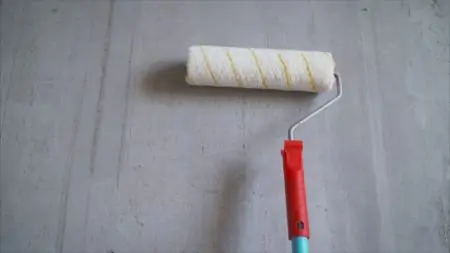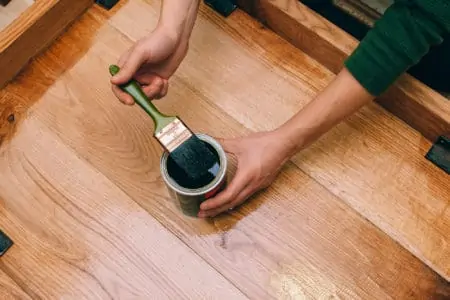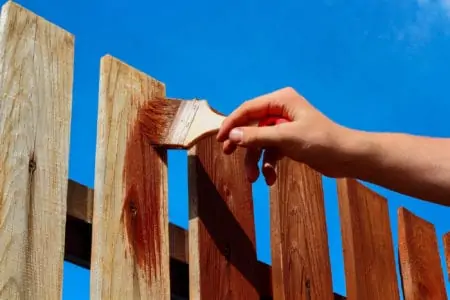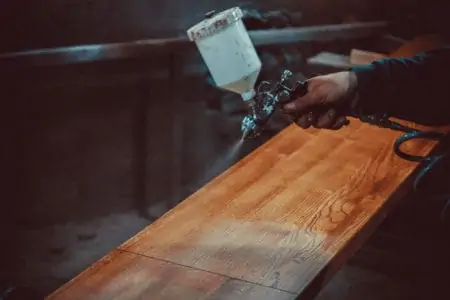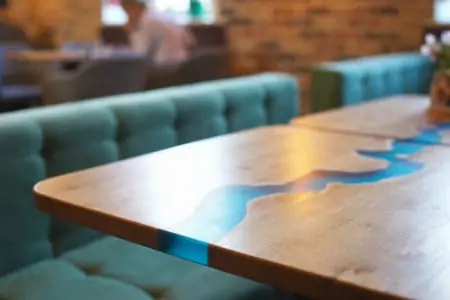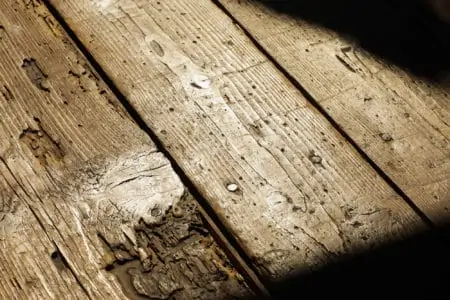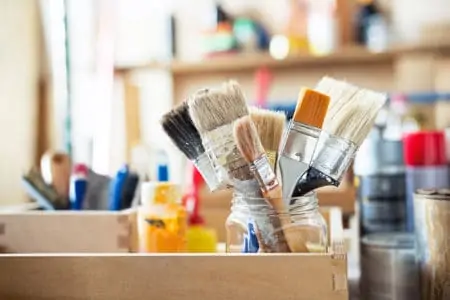How long does it take for primer to dry? Primer dries within 30 minutes to an hour, but that doesn’t mean you can start painting right away. Two or three hours is how long the primer should dry before painting.
In this article, we examine how long it takes primer to dry so that you get the best results and a long-lasting painted surface.
Key Takeaways
- Primer drying times: Water-based primers take about 1 hour, while oil-based primers can take up to 4 hours to dry.
- Factors affecting drying time: Type of primer, brand, humidity, temperature, ventilation, surface type, and coating thickness all impact the drying time of primer.
- Checking if primer is dry: If it feels dry to the touch, it is likely ready for painting. Always check the manufacturer’s guidelines for specific drying times.
- Speeding up primer drying: Use fast-drying primer, reduce humidity, apply thinner coats, increase air circulation, and follow manufacturer’s instructions to help primer dry faster.
What Is a Primer and When You Might Need To Use It?
A primer is a base coat that goes directly onto the surface and helps to improve the spread, appearance, and adherence of the first coat of paint. It also protects the surface beneath and extends the life of the paint.
You don’t always need to use a primer, especially if your walls and surfaces are in good condition or you are touching up existing paintwork; however, there are situations when using a primer is a must.
The Surface Is Uneven
If you are trying to paint on uneven surfaces, applying primer helps smooth the overall appearance and makes the paint stick better. If you want to paint bricks, wood, or new drywall, they are very porous, so the primer creates a seal to stop your paint from being absorbed into the surface, which costs you more and takes longer for the paint to dry.
Painting a Dark Wall
When you are changing the color, going from light to dark is not a problem, but painting over a darker color with a lighter one is trickier to get right. Primer is a great way of neutralizing the effects of the dark color, giving you a lighter surface to put your paint on.
Primer is cheaper than paint, so it saves you money, and it speeds up the process.
The Wall Has a Glossy Base
If your surface is glossy, paint won’t adhere as well, so use a primer to lay down a matte coat for the paint to stick. Primer has a different make-up to paint and contains more sealing qualities than color.
New Drywall
New drywall is porous, so the paint just soaks in, meaning you need several coats at great expense. Primer seals the surface, making it easier to apply the paint. It increases the coverage and stops the paint from absorbing into the surface.
Smoke or Water Damage
If you have any staining on your walls, it still shows through every time you paint over it. That’s because paint has more color pigments and fewer sealing qualities. Primer is the opposite. It locks in the stain, making it possible to paint over it without it coming through.
Shellac is the best type of primer to use if you have stained walls.
Wood
Wood is porous, so no matter how many coats you lay down, it keeps soaking in. Primer is a cost-effective way of sealing the surface, stopping the paint from absorbing.
Factors That Impact the Primer Drying Times
Primer takes between 1 and 3 hours to dry on average, but significant factors alter the way the primer dries.
Type of Paint Primer
Essentially, there are 4 types of primer: oil-based, water-based, shellac, and self-priming. Let’s take a look in more detail.
Water-Based
Water-based primer has water as the main ingredient. They are low VOC (volatile organic compounds), low odor, and better for the environment. They are also easier to clean after you have finished the task. Plus, drying times are a lot faster.
Oil-Based
Oil-based primers are the best choice for porous surfaces and bare wood because they seal and create a better foundation for the paint to stick to, but they take up to 4 hours to dry.
Shellac
Shellac is ideal for smoke and water-damaged walls. Shellac is also versatile, working well on wood, metal, plastic, and plaster.
Self-Priming
Self-priming paint is a primer and paint in one. It saves you money and time because you don’t need to prime the surface first. It also saves you time because you simply apply the paint, and it does the rest.
Most self-priming paints are dry to the touch in 60 minutes, so you can get on applying the second coat.
Brand Used
Drying times vary massively between the brands and types of primers. As we’ve discussed, water-based products dry the fastest, with oil-based primers taking up to 4 hours.
Humidity and Temperature
The amount of moisture in the air slows the way the primer dries. Most manufacturers recommend applying the paint in temperatures between 40 and 80 degrees Fahrenheit, with a maximum humidity of 85 percent.
If the weather is too hot, the primer will take longer to dry, and if it’s too cold, it thickens the formula, especially oil-based products, making it impossible to brush it on. Some water-based paints may freeze in extreme temperatures because the primary ingredient is water.
Ventilation
Keeping your indoor spaces ventilated when applying shellac or oil-based primers is important because they contain chemicals that release strong odors that could become overpowering. It could even induce nausea, headaches, and sore eyes and throat.
A good flow of air keeps the air circulating, which enables the primer to dry.
Type of Surface
Priming metal takes longer, up to 4 hours, while wood and brick are porous, absorbing more of the primer. Because of this, you may need additional coats to get proper adherence.
Coating Thickness
The thicker you apply the primer, the longer it will take to dry. It’s always best to read the manufacturer’s guidelines and try not to use too much.
Exterior or Interior Project
If you are painting outside, you need to keep an eye on the weather forecast and try to avoid priming in the mid-day sun when it’s at its hottest. You might be better waiting until the evening to paint on the primer, or failing that, get up early before the sun has gained strength.
Painting inside is a bit easier because you can control the temperature and humidity by setting your thermostat and using a dehumidifier.
Drying Times of 25 Popular Primers
As we’ve touched on, the brand of primer you have differs from other products when it comes to drying times. Let’s take a look.
| Product | Type | Drying Time |
| Kilz 2 All-Purpose | Latex | 60 minutes |
| Valspar | Latex | 60 minutes |
| Zinsser Bull’s Eye | Latex | 60 minutes |
| Kilz Mold and Mildew | Latex | 30-60 minutes |
| Zinsser Rust-Oleum | Latex | 60 minutes |
| Kilz Original | Oil-Based | 30-60 minutes |
| Zinsser Cover Stain | Oil-Based | 30-60 minutes |
| Rust-Oleum Metal | Oil-Based | 2-4 hours |
| Zinsser Odorless | Oil-Based | 30-60 minutes |
| Valspar Anti-Rust | Oil-Based | 2-4 hours |
| Zinsser B-I-N | Shellac | 25-60 minutes |
| Zinsser Clear B-I-N | Shellac | 25-60 minutes |
| Zinsser Bull’s Eye | Shellac | 30-60 minutes |
| Behr Ultra | Self-Priming Paint | 1-2 hours |
| Behr Marquee | Self-Priming Paint | 1-2 hours |
| Behr Premium Plus | Self-Priming Paint | 1-2 hours |
| Valspar | Self-Priming Paint | 30-60 minutes |
| HGTV Home | Self-Priming Paint | 30-60 minutes |
| HGTV Home Showcase | Self-Priming Paint | 60 minutes |
| Zinsser | Self-Priming Paint | 30-60 minutes |
| Kilz 2 All-Purpose | Latex | 60 minutes |
| Valspar | Latex | 60 minutes |
| Zinsser Bull’s Eye | Latex | 60 minutes |
| Kilz Mold and Mildew | Latex | 30-60 minutes |
How To Know When Primer Is Dry
The general rule of thumb is you should keep checking the primer. If it feels dry to the touch, it is probably ready for the first coat of paint. Most water-based primers take 60 minutes to dry, while oil-based products could take as long as 4 hours.
If you want to be 100 percent sure, check the maker’s guidelines.
How To Make Primer Dry Faster
The best way is to use the primer exactly as the manufacturer recommends. Make sure you follow all of the instructions and don’t be tempted to skip anything. However, if you want to speed up the process, there are some things you can do.
Keep Humidity Down
By reducing the amount of moisture in the air, you ensure that the primer dries faster. You can use a dehumidifier to reduce humidity or wait until you have a cooler, less humid day.
Use Fast-Drying Primer
If speed matters, use self-priming paint. You get the color down, and as it dries, it seals just like a primer. It also removes the need to lay down a coat of primer and wait until it dries.
If you still want a separate primer, water-based products are much faster at drying than oil-based formulas.
Use a Hairdryer
Hold the hairdryer about a foot away from the primed surface and keep it on low heat.
Thinner Coats
Thinner layers will dry faster than a thick coating. It might mean you have to paint two layers or more, but the drying times between each coat are a lot faster.
Increase Air Circulation
Allowing a free flow of air inside your room helps to air dry the primer. Think of it like drying washing on the line. Without airflow, it would take a lot longer.
What Happens If You Paint Over Primer Too Soon?
If the primer is still wet, it will mix with the paint, altering the color, plus you will get an uneven surface with reduced paint adherence. If the primer is too wet, it might lift off the wall and leave streaks or flakes as the wall dries.
